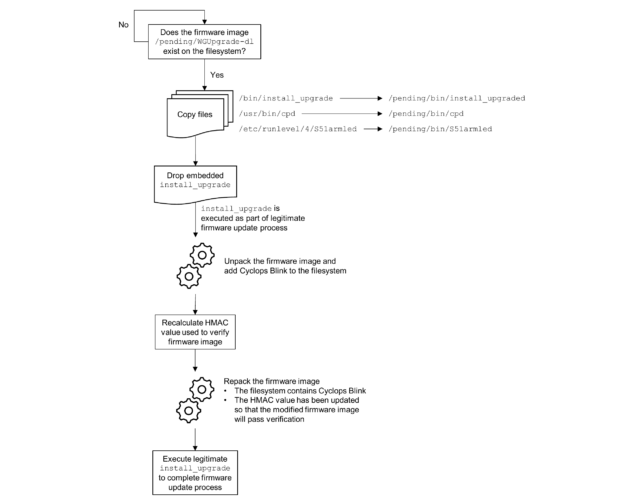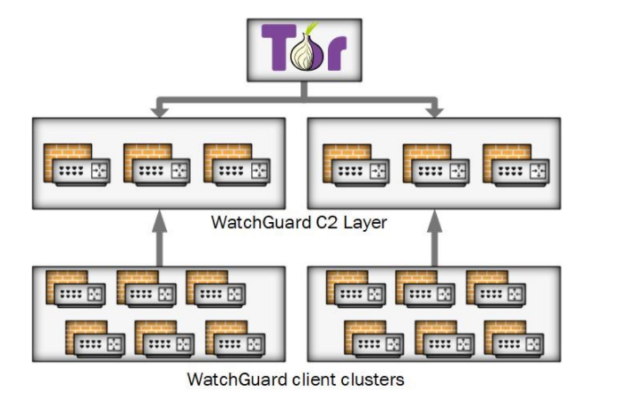
reader comments
59 with 30 posters participating, including story author
Hackers for one of Russia’s most elite and brazen spy agencies have infected home and small-office network devices around the world with a previously unseen malware that turns them into attack platforms that can steal confidential data and target other networks.
Cyclops Blink, as the advanced malware has been dubbed, has infected about 1 percent of network firewall devices made by network device manufacturer Watchguard, the company said on Wednesday. The malware is able to abuse a legitimate firmware update mechanism found in infected devices in a way that gives it persistence, meaning it survives reboots.
Like VPNFilter, but stealthier
Cyclops Blink has been circulating for almost three years and replaces VPNFilter, the malware that in 2018 researchers found infecting about 500,000 home and small office routers. It contained a veritable Swiss Army Knife that allowed hackers to steal or manipulate traffic and to monitor some SCADA protocols used by industrial control systems. The US Department of Justice linked the hacks to the Main Intelligence Directorate of the General Staff of the Armed Forces of the Russian Federation, typically abbreviated as the GRU.
With VPNFilter exposed, Sandworm hackers built a new malware for infecting network devices. Like its predecessor, Cyclops Blink has all the trappings of professionally developed firmware, but it also has new tricks that make it stealthier and harder to disinfect.
“The malware itself is sophisticated and modular with basic core functionality to beacon device information back to a server and enable files to be downloaded and executed,” officials with the UK’s National Cyber Security Center wrote in an advisory. “There is also functionality to add new modules while the malware is running, which allows Sandworm to implement additional capability as required.”

The malware contains a hard-coded RSA public key, which is used for C2 communications, as well as a hard-coded RSA private key and X.509 certificate, but they don’t appear to be actively used within the samples analyzed by the UK officials, making it possible that they’re intended to be used by a separate module.
Cyclops Blink uses the OpenSSL cryptography library to encrypt communications underneath encryption provided by TLS.
“Each time the malware beacons it randomly selects a destination from the current list of C2 server IPv4 addresses and hard-coded list of C2 ports,” Wednesday’s advisory stated. “Beacons consist of queued messages containing data from running modules. Each message is individually encrypted using AES-256-CBC. The OpenSSL_EVP_SealInit function is used to randomly generate the encryption key and IV for each message, and then encrypt them using the hard-coded RSA public key. The OpenSSL_RSA_public_decrypt function is used to decrypt tasking, received in response to beacons, using the hard-coded RSA public key.”
Other new measures for stealth include use of the Tor privacy network to conceal the IP addresses used by the malware. UK officials wrote:

WatchGuard said it retained security firm Mandiant to investigate the infections and has also been working with law enforcement.
“WatchGuard has concluded, based on our own investigation, an investigation conducted jointly with Mandiant, and information provided by the FBI, that there is no evidence of data exfiltration from WatchGuard or its customers, and firewall appliances are not at risk if they were never configured to allow unrestricted management access from the Internet” company officials wrote. The document also includes a list of indicators WatchGuard customers can use to detect infections and steps they can take to disinfect them.
Sandworm is among the world’s most advanced—not to mention cutthroat—outfits that has been behind almost two decades of ambitious and destructive cyberattacks. Examples include:
WIRED journalist Andy Greenberg in 2019 published Sandworm, a book that chronicles the hacks and the geopolitical tensions they exploit. Wednesday’s advisory said that Cyclops Blink has the potential to infect a large number of devices.
“In common with VPNFilter, Cyclops Blink deployment also appears indiscriminate and widespread,” UK officials wrote. “The actor has so far primarily deployed Cyclops Blink to WatchGuard devices, but it is likely that Sandworm would be capable of compiling the malware for other architectures and firmware.”






